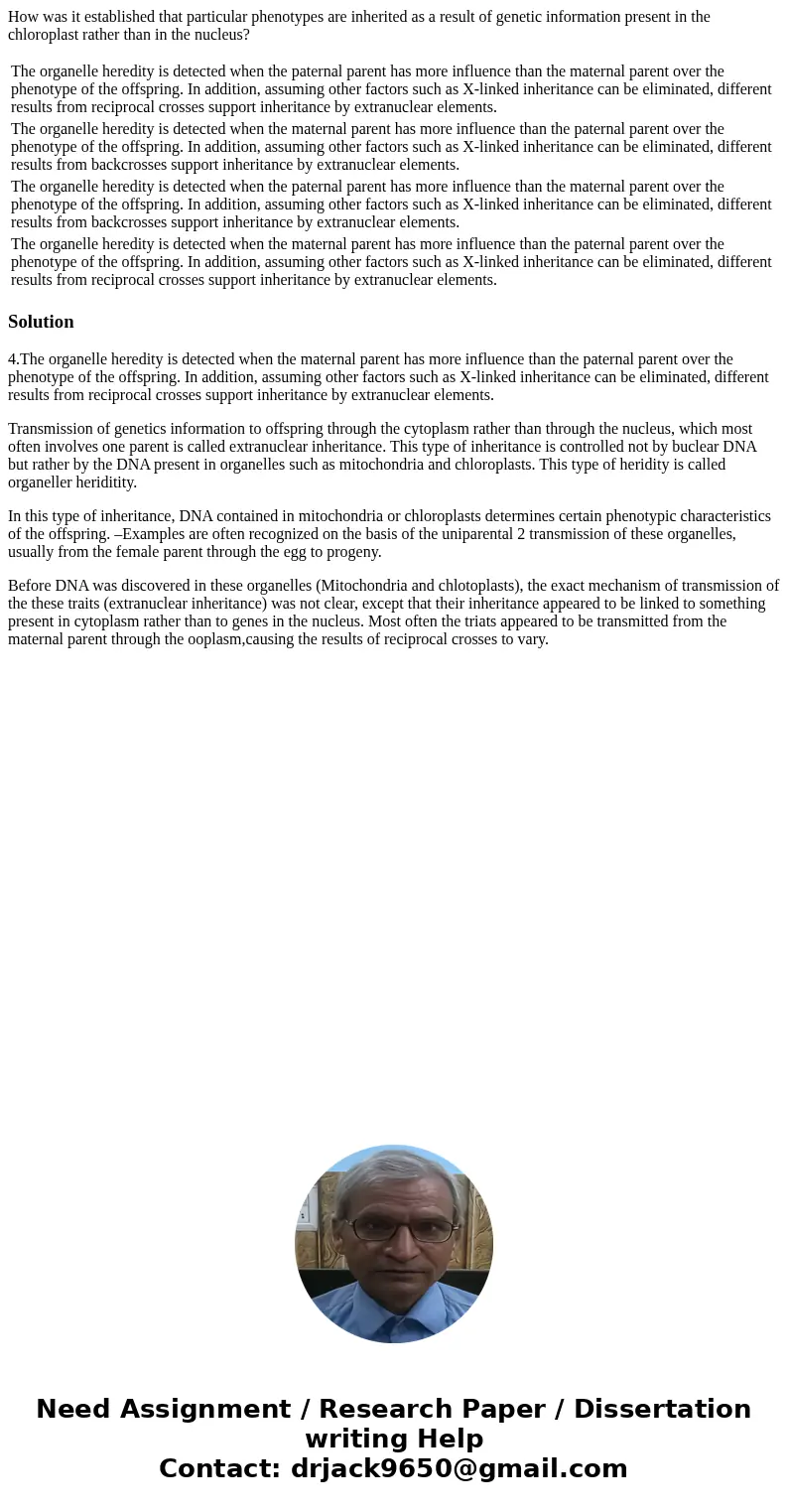How was it established that particular phenotypes are inheri
How was it established that particular phenotypes are inherited as a result of genetic information present in the chloroplast rather than in the nucleus?
| The organelle heredity is detected when the paternal parent has more influence than the maternal parent over the phenotype of the offspring. In addition, assuming other factors such as X-linked inheritance can be eliminated, different results from reciprocal crosses support inheritance by extranuclear elements. |
| The organelle heredity is detected when the maternal parent has more influence than the paternal parent over the phenotype of the offspring. In addition, assuming other factors such as X-linked inheritance can be eliminated, different results from backcrosses support inheritance by extranuclear elements. |
| The organelle heredity is detected when the paternal parent has more influence than the maternal parent over the phenotype of the offspring. In addition, assuming other factors such as X-linked inheritance can be eliminated, different results from backcrosses support inheritance by extranuclear elements. |
| The organelle heredity is detected when the maternal parent has more influence than the paternal parent over the phenotype of the offspring. In addition, assuming other factors such as X-linked inheritance can be eliminated, different results from reciprocal crosses support inheritance by extranuclear elements. |
Solution
4.The organelle heredity is detected when the maternal parent has more influence than the paternal parent over the phenotype of the offspring. In addition, assuming other factors such as X-linked inheritance can be eliminated, different results from reciprocal crosses support inheritance by extranuclear elements.
Transmission of genetics information to offspring through the cytoplasm rather than through the nucleus, which most often involves one parent is called extranuclear inheritance. This type of inheritance is controlled not by buclear DNA but rather by the DNA present in organelles such as mitochondria and chloroplasts. This type of heridity is called organeller heriditity.
In this type of inheritance, DNA contained in mitochondria or chloroplasts determines certain phenotypic characteristics of the offspring. –Examples are often recognized on the basis of the uniparental 2 transmission of these organelles, usually from the female parent through the egg to progeny.
Before DNA was discovered in these organelles (Mitochondria and chlotoplasts), the exact mechanism of transmission of the these traits (extranuclear inheritance) was not clear, except that their inheritance appeared to be linked to something present in cytoplasm rather than to genes in the nucleus. Most often the triats appeared to be transmitted from the maternal parent through the ooplasm,causing the results of reciprocal crosses to vary.

 Homework Sourse
Homework Sourse